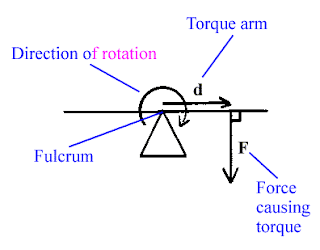10) Velocity = Distance / Time
This is a basic equation we learned early in the year. It is used to find the rate of speed an object is traveling at. Here is a sample problem:
A car goes 50 miles in 75 minutes, what is its overall velocity?
Answer- V = D/T so V = 50/75 = 2/3
*2/3 Meters per second
Velocity is measured in m/s because it is a rate of time.
9) Acceleration = Fnet / Mass
This is not just an equation, it is Newton's Second Law of Motion, which specifically states that Acceleration is inversely proportional to mass, and directly proportional to Fnet.
8) Universal Gravitational Law- F = G m1 X m2 / d^2
The Universal Gravitational Law is very important to physics because it allows us to find the gravitational attraction between two large objects, planets, for example. Another important factor that comes from this law is that as distance increases, the force between the two objects decreases. Likewise, as the distance decreases, the force will increase. This is why, if astronauts want to fly by other planets, they must not get too close, or the gravitational force of attraction will increase and they will be pulled into the planet.
7) Torque = Lever Arm X Force
This is a very important equation because it helps us to understand why, for instance, a longer wrench will work better in turning a bolt. Since torque is jointly proportional to lever arm and the force, if you increase either one of the two, you will increase the torque. So, if a bolt is incredibly hard to screw, you don't need to be extremely tough, you just need a bigger wrench.
6) Momentum = Mass X Velocity, P = mv
As shown by the equation, momentum is the product of the mass and velocity of an object. The most interesting thing about this equation is that it shows that an object can have very little mass, but still have alot of momentum, like the remote-controlled car in this video:
5) Work = Force X Distance
Work is the product of force and distance an object is pushed. Work can only occur if the force and the distance moved are parallel. For example, if I were to carry a book across a room, my force on the book and the distance would be parallel, and no work would occur. Here is an example problem:
If a 100 N man runs up a 7 meter high stair case, he produces 700 Joules of work. It does not matter how fast he moves, because that is not part of the equation.
4) How Far (Free Fall) D = 1/2 g t^2
This equation is important because it shows us how to know how far an object has fallen when no other forces are acting on it (air resistance, wind).
3) Kinetic Energy = 1/2 m v^2
Kinetic energy is the energy of moving things. This equation allows us to determine the Kinetic Energy in a moving object at any given moment. Kinetic Energy is also proportional to work because of the equation, (delta)KE = Work. Here is an example:
A ball has a mass of 20 g, and it is moving at 100 m/s. What is its Kinetic Energy?
- KE = 1/2 (20) (100^2) = 10 (10000) = 100000
2) Potential Energy = mass X gravity X height
Potential Energy is the opposite of Kinetic energy in that, it is found in stationary objects. Also, height is a very important factor. The higher you raise an object, the more potential energy it will have. Here is an example:
A 10 g rock is on the edge of a cliff 50 m up. How much PE does it have?
- PE = mgh = 10(10)(50) = 100(50)= 5000
1) OHM'S LAW- Current = Voltage/ Resistance
This is the most important equation in all of physics. It shows us that as you increase the resistance, the current will decrease because the two are inversely proportional. Electricity is a huge part of our every day lives. So, it is imperative that we have a solid understanding of current and how it works in our homes. If we do not use fuses, which cause the circuit to break if there is too much current, houses could catch on fire from all the current.




